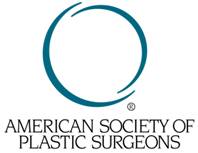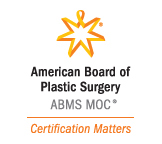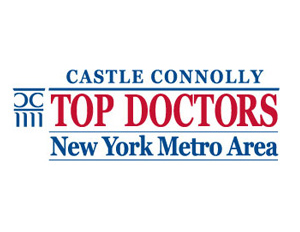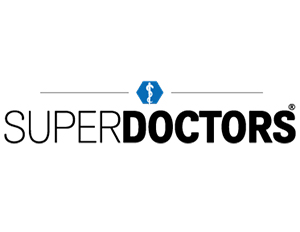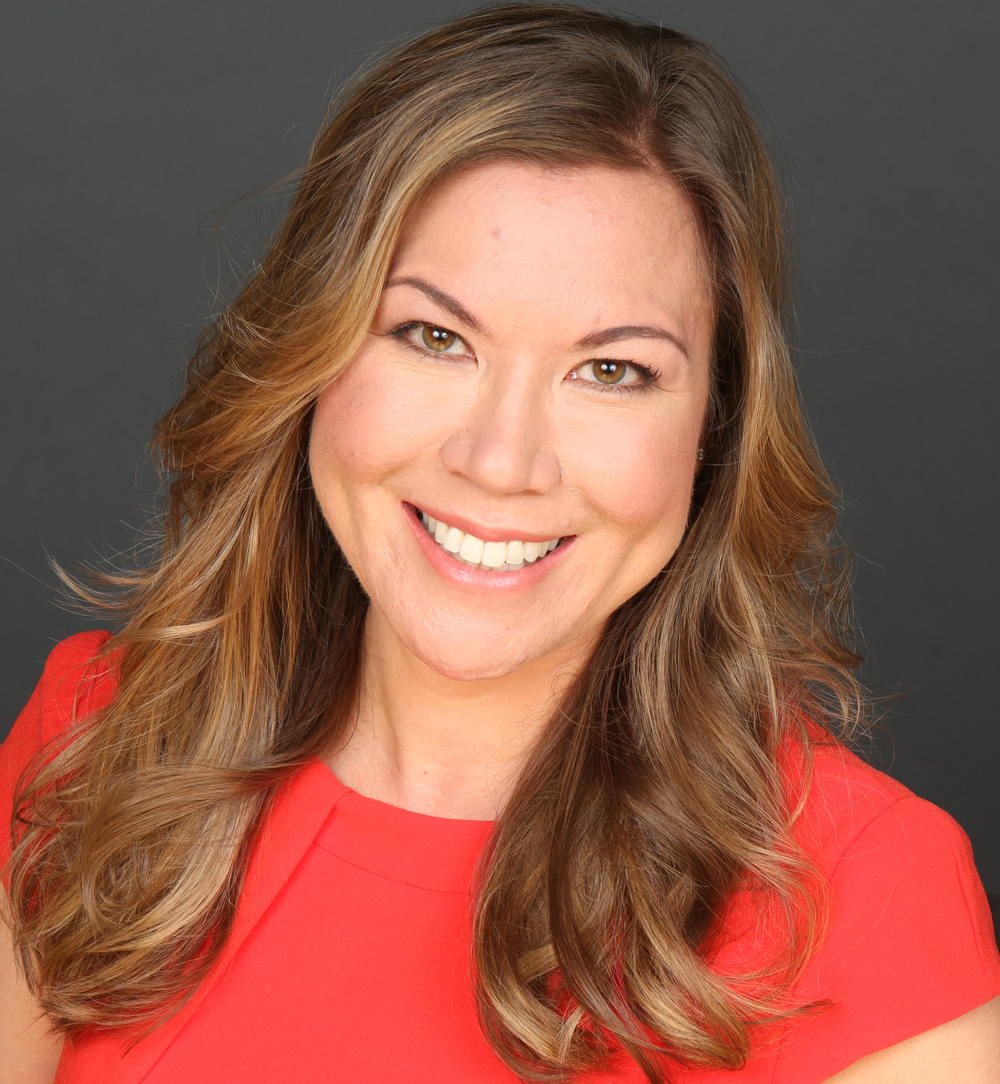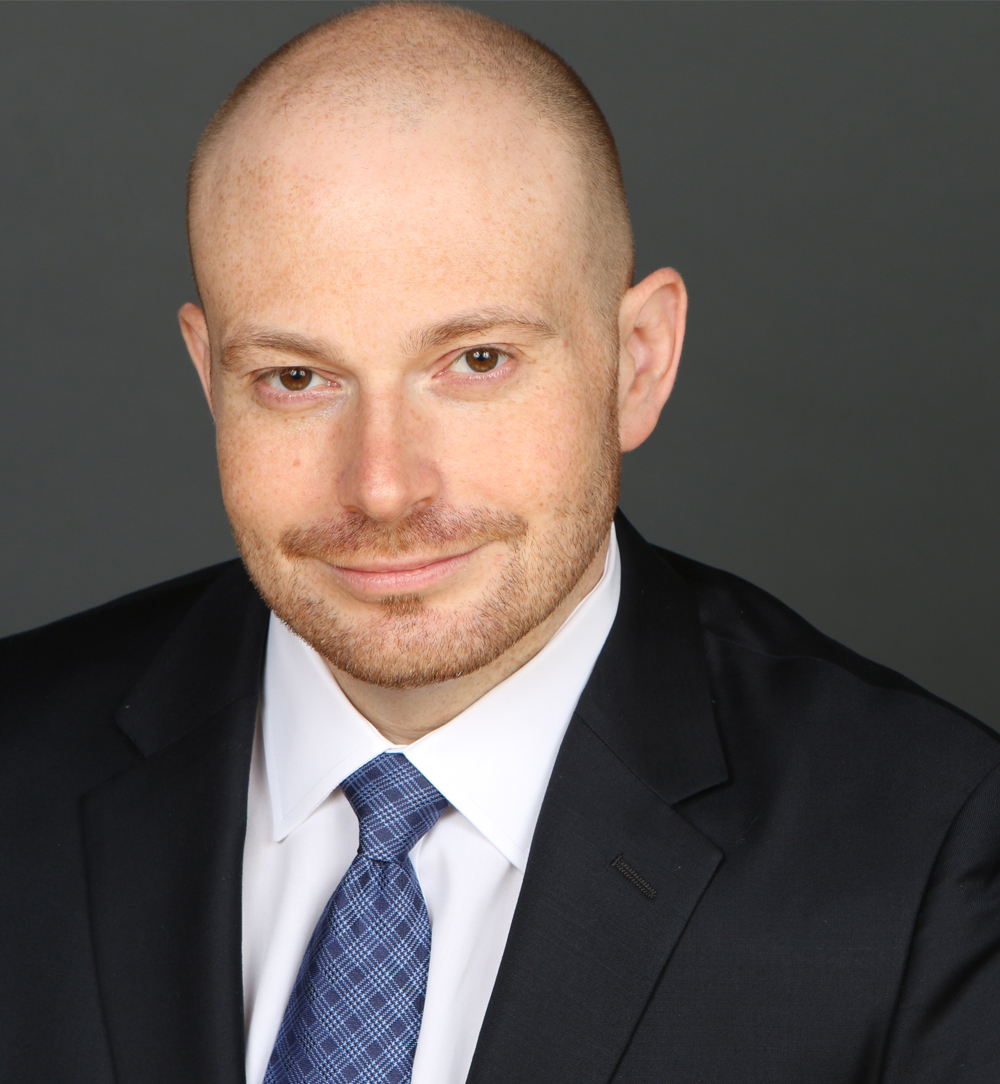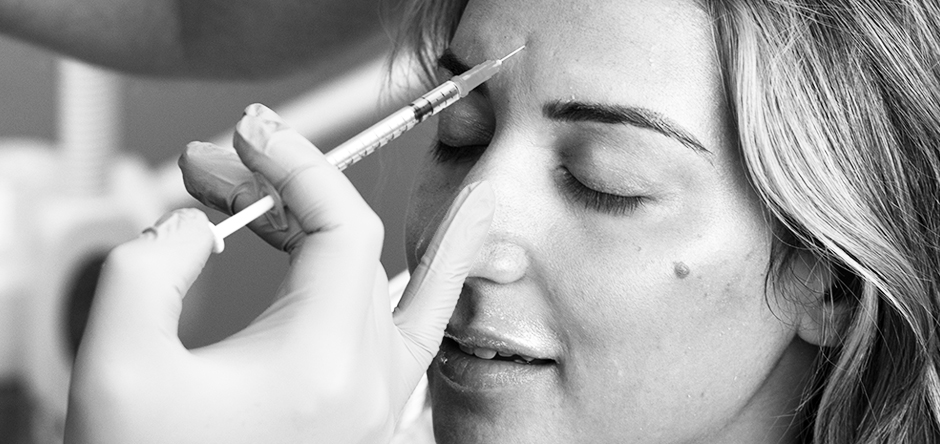
Minimize wrinkles and expression lines for a more youthful complexion.
What are injectables and how are they used in aesthetic medicine?
In aesthetic medicine, an injectable is an FDA-approved medical “device” which is injected into the target tissue (such as the muscle, subcutaneous, or subdermal / dermal layer) to either minimize wrinkles, smooth skin, highlight and contour natural features, or to add more volume. Both neurotoxins (Botox / Dysport), fillers (Restylane, Juvéderm, Belotero, Versa) and biostimulators (Sculptra, Radiesse) are considered “injectables.” Neurotoxins weaken the action of the particular muscle that is injected, preventing its movement from causing wrinkles or folds on the overlying skin. Fillers create volume and support in the treated area. Biostimulators work like fillers to create volume by stimulating the body’s own collagen production. Individually and in combination, injectables are an important part of facial rejuvenation and medical aesthetic treatments.
Injectables benefits
Neurotoxins such as Botox or Dysport work to prohibit muscle movement. Their role in aesthetic medicine is targeted towards specific muscle(s) in order to soften the effects of those muscle movements on the overlying skin. With consistent treatments over time, this prevents wrinkles (or rhytids) that exist at rest (static rhytids) and with movement or animation (dynamic rhytids).
Both neurotoxins (Botox or Dysport) and fillers can create the effect of smoother skin. Neurotoxins work over a period of days to weeks to create a smoother appearance as well as to prevent deeper wrinkles from forming over time. Fillers create volume to the cushioning layers under the skin. Different fillers can be used alone or in combination to fill deep folds, soften fine lines, and highlight natural facial contours.
Fillers and biostimulators are used to add volume. Hyaluronic acid fillers in particular are used for immediate enhancement of volume to the lips, nasolabial folds, cheeks, marionette lines, and temporal hollows. Biostimulators such as Radiesse and Sculptra are best suited for a gradual increase in volume, usually in the hollows of the face such as the cheek and temple regions. Biostimulators work well in a diluted form for general volumization when volume deficiency occurs as a result of advanced aging in the face and neck.
Neurotoxins and fillers can be used artfully by a skilled provider to create the appearance of a “lift.” Neither product will actually tighten skin or remove skin excess in the same fashion as a surgical procedure, but the effacement of dark shadows and hollows with well-placed volume and smoothing of wrinkles offers significant improvements without surgery.
Fillers and neurotoxins are done comfortably in an office visit setting. They do not require any anesthesia and are non-surgical treatments.
Compared to more invasive treatments for facial rejuvenation, there is little to no downtime with injectables. Your provider may recommend a period of rest and to avoid any bending, stooping, or strenuous physical activity for a short time after your treatment.
In the proper hands, fillers and neurotoxin administration is very safe. Bruising and swelling are the most common complications post-procedure. More serious complications and sequelae such as migration of the filler or neurotoxin from the desired area or intravascular injection are possible but very uncommon.
Injectables candidates
There is a role for fillers or neurotoxin for almost anyone who desires aesthetic improvement. The best candidates have researched a qualified provider and have a realistic understanding of the expectations and possible limitations / complications of the treatment they are choosing.
Injectables Videos
Injectables techniques
Neurotoxins are administered via a small gauge needle in very small volumes to target areas. The target areas can be pretreated with a topical local anesthetic or no anesthetic at all. The procedure is usually very quick and well-tolerated.
Fillers and biostimulators are usually formulated with a local anesthetic. For added comfort, a topical local anesthetic also can be applied to the skin, especially in more sensitive areas (ie, lips). The administration of fillers and biostimulators is with either a small gauge needle or blunt cannula.
Injectables procedure types
Botox, Dysport
Neurotoxins (ie, Botox, Dysport) block signals from the nerve to the muscle, prohibiting muscle contraction. Localized and specific injection of a neurotoxin such as Botox or Dysport into a muscle belly prevents the muscle movement. The aesthetic effect is a smoother appearance with softening of lines and wrinkles.
Restylane, Juvéderm, and Versa
Fillers and biostimulators are effective in creating volume. Fillers come in different types, often grouped according to their expected longevity. There are temporary fillers, semi-permanent and permanent types. Temporary fillers include the popular hyaluronic acid fillers such as Restylane, Juvéderm, and Versa. Hyaluronic acid is naturally found in the skin’s dermis and works to bring and retain water within its scaffold. The ability to attract and retain water is the mechanism by which hyaluronic acid fillers create volume. Different types of hyaluronic acid fillers have differing abilities to retain water and thus, varying degrees of volume, support, and post-procedure swelling.
Sculptra and Radiesse
Sculptra and Radiesse are considered semi-permanent fillers. They stimulate your body’s own natural collagen production, and this process is responsible for the gradual increase in volume in the treated areas. This occurs over weeks to months post-treatment and the results usually last for more than 1 to 2 years.
Permanent fillers
Permanent fillers are comprised of non-biodegradeable substances and have limited indications in modern aesthetic medicine. Because they cannot be reversed and are not broken down naturally by the body, untoward effects are difficult to correct. The most permanent “filler” option that is generally accepted in surgical aesthetic procedures is your body’s own fat—known as autologous fat grafting.
Injectables treatment areas
The most common sites for neurotoxin and fillers are in the face. However, the neck and some areas of the body also can benefit from these treatments.
Your initial consultation for Injectables
A consultation for injectables begins with a survey of your overall health, medications, allergies, past treatments, areas of concern, and budget. A plan for treatment is suggested and timing for the treatment(s) is discussed. Oftentimes, injectable treatments can be started at the same visit as your initial consultation.
Pre-procedure preparation for Injectables
Blood thinners and any NSAIDs (ibuprofen, aspirin, Advil, Motrin or Aleve, or any medications which contain these products) should be discontinued for a period of time (usually no less than 5 days) prior to your procedure. If you have a history of cold sores, medication allergies, or an allergy to cow’s milk, you should let your provider know before the day of your treatment. In these cases, the provider can make changes to the treatment or prescribe certain prophylactic medications in order to decrease the chance of any untoward side effects, complications, or allergic reactions.
What to expect during Injectables procedure
The procedure is performed in a comfortable office visit setting. You may be asked to remove your eyeglasses or jewelry. If you have long hair, this is best secured up and away from the face / neck. If you having a body procedure, then you may be asked to change into a gown. Markings with a cosmetic pencil may be used to identify anatomical considerations. If a topical anesthetic is used, this will be applied to your skin and allowed to sit for 15-30 minutes prior to the treatment. Finally, the skin in the area(s) to be treated will be cleaned and prepped with an alcohol pad.
An injectable procedure can take anywhere from 15 minutes up to an hour, depending on the number and location of areas addressed, type of treatment, and number of vials (or units) of products that may be injected. Larger areas will typically require more product and more time.
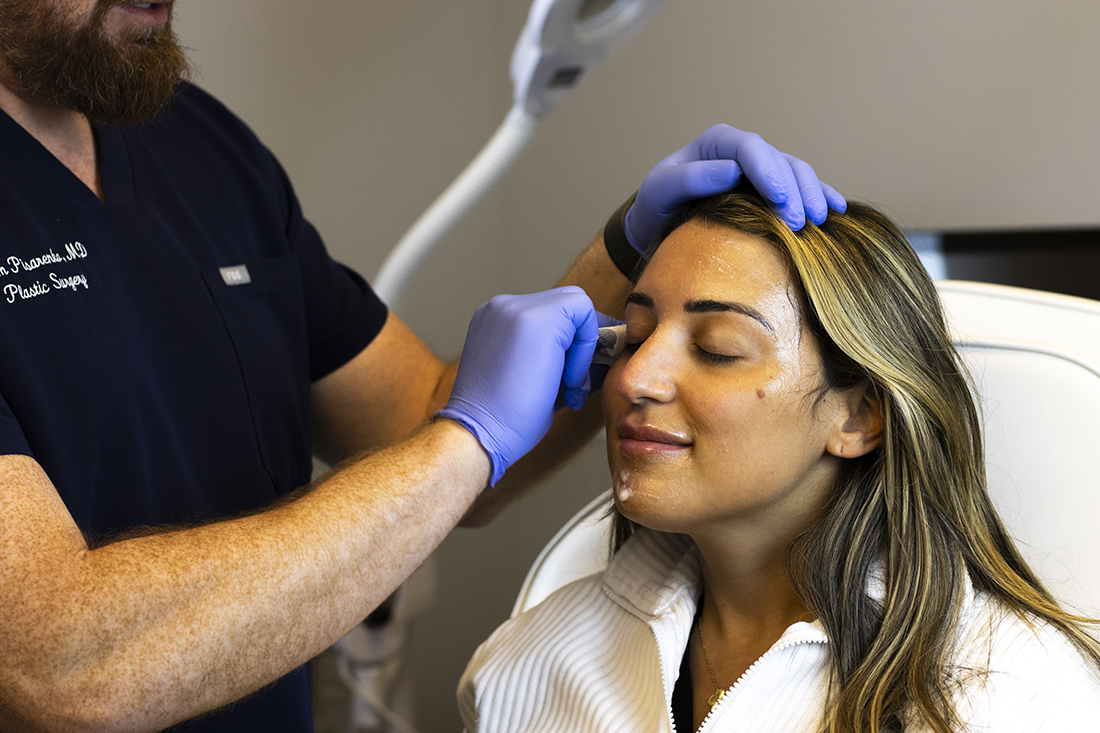
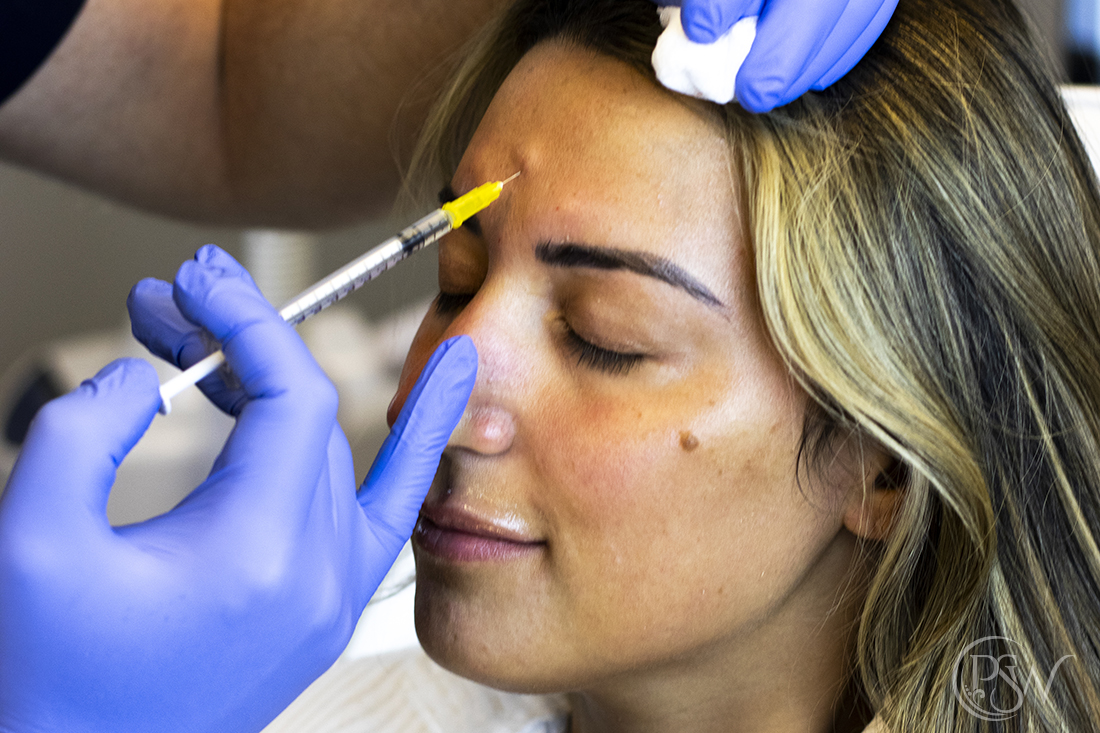
Recovery after Injectables procedure
An icepack may be placed at the end of the procedure. Icing in the first few hours post-procedure can reduce bruising or swelling. We also recommend the use of Arnica Montana herbal supplement and a short period of rest. Avoiding pressure on the sites and any strenuous activity is recommended in the first 24 hours. If you feel well and have no significant bruising or swelling, more regular physical activity can be resumed comfortably after that time. Makeup or coverup can be used immediately, if desired.
Injectables results
Results with fillers are essentially immediate. However, swelling starts to set-in almost immediately. In many cases, it can take 2-14 days for the final results to be fully realized. Results from a biostimulator can take months. A follow-up is recommended two weeks after the procedure but can be sooner if there are any questions or concerns.
Injectables anesthesia
Injectable treatments are non-surgical and well-tolerated in the vast majority of patients with a local anesthetic and / or topical anesthetic. No other anesthesia is required.
Injectables complications
Bruising and swelling are the most common complications post-procedure. More serious complications and sequelae such as migration of the filler or neurotoxin from the desired area or intravascular injection are possible but very uncommon.
Injectables cost and financing
Neurotoxins are sold by the unit and can range from $7.5 to $12 per unit. Fillers are sold by the syringe, which come pre-packaged. Fillers range from $750 to $1000 per vial. Biostimulators are sold by volume used and can range from $750 – $1500 per syringe. Financing is not available for injectables.
Injectables FAQ
Treatment with a neurotoxin can last anywhere from 2-3 months up to 6 months in some patients. Factors that affect longevity include your body’s own response to the treatment as well as the amount of product that is used. A touch-up can add additional units of the product, if necessary, to increase longevity of your results.
Temporary, hyaluronic acid fillers typically last from 6 to 9 months. Semi-permanent fillers or biostimulators can last anywhere from 1 to 2 years, on average.
There is a role for fillers or neurotoxin for almost anyone who desires aesthetic improvement. The best candidates have researched a qualified provider and have a realistic understanding of the expectations and possible limitations / complications of the treatment they are choosing.
Facilities & Hospital Affiliations
Our surgeons have privileges at White Plains Hospital, New York Presbyterian – Lawrence Hospital Center, Montefiore – New Rochelle Hospital, Westchester Medical Center, and Jacobi Medical Center. They also perform procedures in their fully accredited operating room in Harrison, NY. Our state-of-the-art facility is professionally designed and decorated for your comfort. We are always interested to know if there is anything we can do to enhance your experience. We appreciate your suggestions and pledge to work as a team to make your time here a rewarding experience.
- White Plains Hospital
- New York Presbyterian – Lawrence Hospital Center
- Montefiore – New Rochelle Hospital
- Westchester Medical Center
- Jacobi Medical Center
Accreditation and Associations
We maintain an AAAASF accredited surgical suite, equipped like a hospital operating room with the privacy and ease of an office setting, offering full general anesthesia for more complex procedures as well as sedation and local anesthesia for other procedures. We enjoy a strong relationship with some of the finest hospitals in the area, offering overnight and extended post-operative stays if medically advisable. This is ideal for our out of town patients, those with little post-operative help, or those desiring a more private recovery. We can also arrange your recovery with a nurse at a luxury hotel located within minutes of our facility.
Contact Us
Schedule your Injectables Consultation
Please contact us with any questions or if you would like to setup a time for a one-on-one consultation with one of our surgeons.
